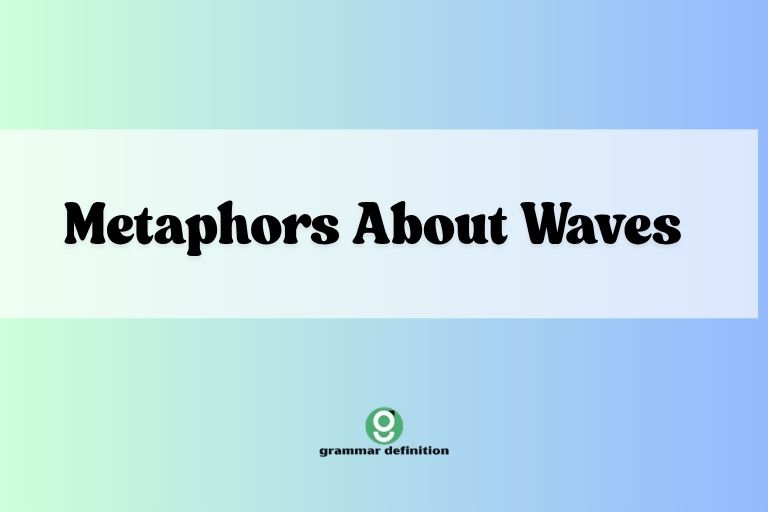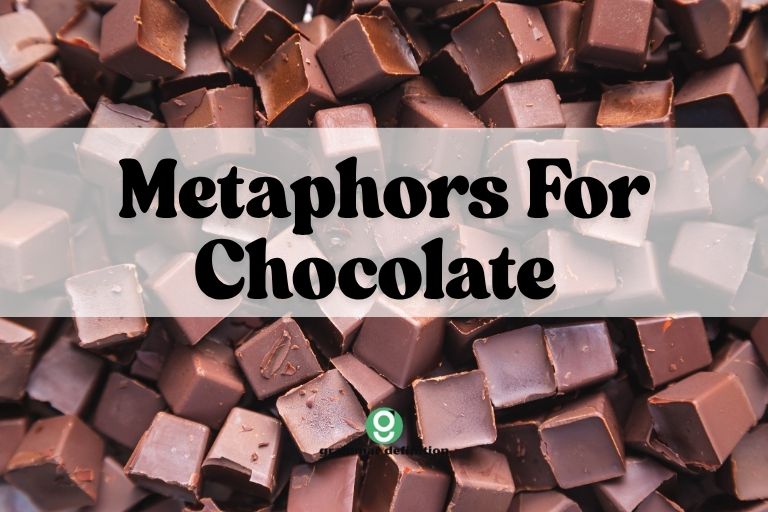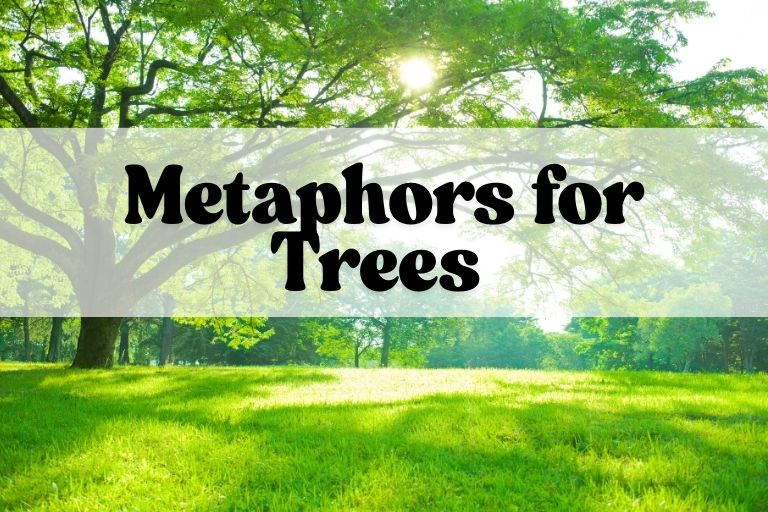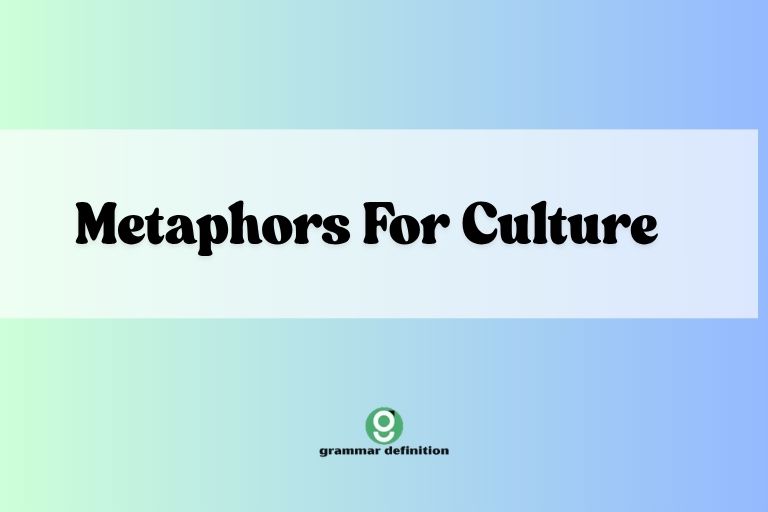Metaphors for Conflict: A Comprehensive Guide
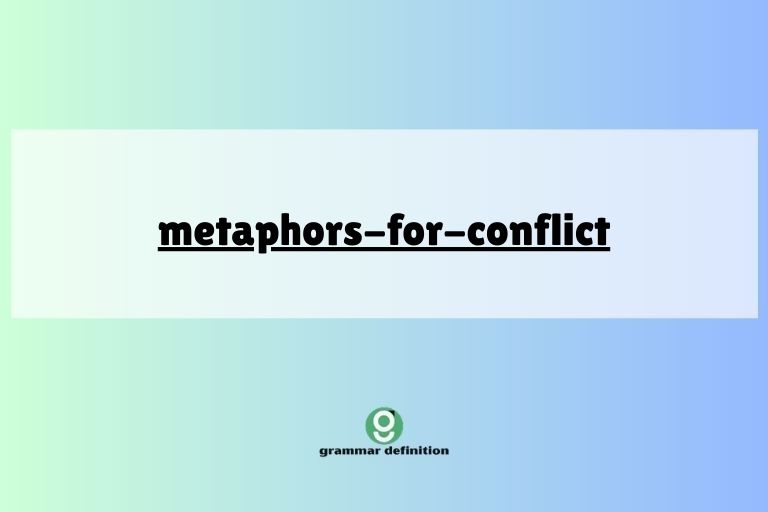
Understanding how we use metaphors to describe conflict is crucial for effective communication and conflict resolution. Metaphors shape our perceptions and influence how we approach disagreements.
This article explores various types of conflict metaphors, their structural elements, usage rules, and common mistakes. It is designed for English language learners, writers, and anyone interested in improving their understanding of language and conflict.
Table of Contents
- Introduction
- Definition of Metaphors for Conflict
- Structural Breakdown of Conflict Metaphors
- Types of Metaphors for Conflict
- Examples of Metaphors for Conflict
- Usage Rules for Conflict Metaphors
- Common Mistakes with Conflict Metaphors
- Practice Exercises
- Advanced Topics
- FAQ
- Conclusion
Introduction
Metaphors are powerful tools that allow us to understand abstract concepts by relating them to more concrete experiences. When it comes to conflict, metaphors play a significant role in shaping our perceptions and influencing our responses.
By examining the metaphors we use to describe conflict, we can gain valuable insights into our attitudes and behaviors. This article will delve into the various types of metaphors used to represent conflict, providing examples, usage rules, and practical exercises to enhance your understanding.
Understanding conflict metaphors is essential for several reasons. First, it helps us to become more aware of the underlying assumptions and biases that may be influencing our interpretation of conflict situations.
Second, it enables us to choose more appropriate and constructive ways of communicating about conflict. Finally, it equips us with the ability to analyze and critique the metaphors used by others, allowing us to better understand their perspectives and motivations.
This guide is designed for a wide audience, including English language learners seeking to expand their vocabulary and improve their comprehension skills, writers looking to add depth and nuance to their writing, and anyone interested in conflict resolution and communication. Whether you are a student, a professional, or simply someone curious about language, this article will provide you with a comprehensive and accessible overview of metaphors for conflict.
Definition of Metaphors for Conflict
A metaphor is a figure of speech that directly compares two unlike things without using “like” or “as.” It asserts that one thing *is* another, creating a figurative association between them. In the context of conflict, metaphors are used to describe and understand complex disagreements, disputes, or struggles by relating them to more familiar concepts or experiences.
These metaphors can significantly impact how we perceive, approach, and resolve conflicts.
Conflict metaphors often involve mapping the characteristics of one domain (the source domain) onto another (the target domain). For example, the metaphor “Conflict is war” maps the characteristics of war, such as battles, strategies, and casualties, onto the experience of conflict.
This can lead to a more aggressive and competitive approach to resolving disagreements.
The function of conflict metaphors is multifaceted. They help us to: 1) conceptualize abstract ideas, 2) frame our understanding of situations, 3) influence our emotional responses, and 4) guide our actions.
By recognizing the metaphors we use, we can become more mindful of their potential impact and choose metaphors that promote more productive and collaborative approaches to conflict resolution. Understanding the nuances of different metaphors can significantly improve communication in tense situations.
Structural Breakdown of Conflict Metaphors
Conflict metaphors, like all metaphors, have two main components: the source domain and the target domain. The source domain is the concept or idea that is used to describe the conflict, while the target domain is the conflict itself. The metaphor works by transferring characteristics from the source domain to the target domain, influencing how we perceive and understand the conflict.
Consider the metaphor “Conflict is a wrestling match.” Here, the source domain is “wrestling match,” and the target domain is “conflict.” The structure of the metaphor involves mapping elements of a wrestling match – such as opponents, rules, strategies, and victory – onto the experience of conflict. This can lead to viewing conflict as a competitive struggle with a clear winner and loser.
The effectiveness of a conflict metaphor depends on the clarity and relevance of the mapping between the source and target domains. A good metaphor should highlight key aspects of the conflict while remaining relatable and understandable.
Additionally, it’s essential to consider the potential implications of the metaphor. Certain metaphors can be more harmful than helpful, especially if they promote aggression or negativity.
For example, the metaphor “conflict is a bomb about to explode” can create a sense of urgency and panic, hindering effective communication and problem-solving.
Types of Metaphors for Conflict
Conflict can be described using a wide range of metaphors, each offering a unique perspective on the nature of disagreement and struggle. Understanding these different types of metaphors can help us to better analyze and respond to conflict situations.
War Metaphors
War metaphors are among the most common and pervasive ways of describing conflict. They frame conflict as a battle to be won, with opponents to be defeated.
This type of metaphor often emphasizes aggression, competition, and the potential for casualties.
Examples of war metaphors include phrases like “fighting for your rights,” “defending your position,” and “attacking their arguments.” These metaphors can be useful for mobilizing people to take action, but they can also escalate tensions and make it more difficult to find common ground.
Game Metaphors
Game metaphors portray conflict as a strategic contest with rules, players, and objectives. Unlike war metaphors, game metaphors often imply a more controlled and less violent approach to conflict.
They emphasize strategy, tactics, and the pursuit of a specific outcome.
Phrases like “playing your cards right,” “leveling the playing field,” and “outmaneuvering your opponent” are examples of game metaphors. These metaphors can encourage creative problem-solving and strategic thinking, but they can also lead to a focus on winning at all costs.
Violence Metaphors
Violence metaphors depict conflict as a form of physical or emotional harm. They emphasize the destructive and painful aspects of disagreement, often highlighting the potential for lasting damage.
Examples of violence metaphors include “cutting remarks,” “stabbing someone in the back,” and “brutal honesty.” These metaphors can be highly emotive and can create a sense of fear and vulnerability. They are often used to express strong feelings of anger, resentment, or betrayal.
Sports Metaphors
Sports metaphors use analogies from various sports to describe conflict. They can emphasize competition, teamwork, and the pursuit of excellence.
They often involve elements of strategy, skill, and physical exertion.
Examples include “taking a swing at the problem,” “running interference,” and “scoring points.” These metaphors can encourage a sense of camaraderie and shared purpose, but they can also create a win-lose dynamic.
Natural Disaster Metaphors
Natural disaster metaphors portray conflict as an uncontrollable and destructive force, like a hurricane, earthquake, or flood. They emphasize the overwhelming and chaotic nature of disagreement, often highlighting the potential for widespread damage.
Phrases like “a storm of controversy,” “a tidal wave of anger,” and “the eruption of violence” are examples of natural disaster metaphors. These metaphors can create a sense of urgency and helplessness, but they can also highlight the need for resilience and recovery.
Journey Metaphors
Journey metaphors describe conflict as a process of moving from one place to another, often with obstacles and challenges along the way. They emphasize the idea of progress, transformation, and the potential for reaching a desired destination.
Examples of journey metaphors include “navigating a difficult situation,” “reaching a crossroads,” and “being on the same path.” These metaphors can encourage patience, perseverance, and a focus on long-term goals.
Building Metaphors
Building metaphors describe conflict resolution as a process of constructing or repairing something. These metaphors emphasize collaboration, planning, and the creation of a stable and lasting outcome.
Phrases like “building bridges,” “laying the foundation,” and “constructing a compromise” are examples of building metaphors. These metaphors highlight the importance of communication, negotiation, and mutual understanding.
Disease Metaphors
Disease metaphors depict conflict as something that spreads and infects, causing harm and requiring treatment. They emphasize the idea of identifying the root cause of the conflict and finding a cure.
Examples include “the cancer of corruption,” “a virus of mistrust,” and “inoculating against misinformation.” These metaphors can highlight the need for proactive measures and preventative strategies.
Examples of Metaphors for Conflict
The following tables provide extensive examples of different types of metaphors used to describe conflict.
Table 1: War Metaphors
This table provides examples of war metaphors used to describe conflict. Note the aggressive and competitive tone in many of these phrases.
| Metaphor | Example Sentence |
|---|---|
| Battle | The negotiation turned into a heated battle of wills. |
| War | The company was at war with its competitors. |
| Fighting | They were fighting for their rights. |
| Attack | He attacked her arguments with well-researched data. |
| Defense | She mounted a strong defense against the accusations. |
| Weapon | Words can be a powerful weapon. |
| Casualties | There were many casualties in the corporate restructuring. |
| Front lines | The sales team was on the front lines of the marketing campaign. |
| Truce | They called a truce after months of disagreement. |
| Siege | The company was under siege from activist investors. |
| Ammunition | He gathered ammunition to support his claims. |
| Strategy | Their strategy was to undermine the competition. |
| Tactics | They employed aggressive tactics to win the deal. |
| Bombard | They bombarded the committee with information. |
| In the trenches | We were in the trenches, working hard to meet the deadline. |
| Taking fire | The CEO was taking fire from the shareholders. |
| Under fire | The project was under fire due to budget overruns. |
| Declare war | They declared war on inefficiency. |
| Onslaught | The company faced an onslaught of negative publicity. |
| Campaign | The political campaign was filled with accusations. |
| Combat | The two departments engaged in heated combat over resources. |
| Defeat | Their goal was to defeat the opposition. |
| Victory | Achieving the merger was a major victory for the company. |
Table 2: Game Metaphors
This table provides examples of game metaphors used to describe conflict. These metaphors often highlight strategy, competition, and the pursuit of a specific goal.
| Metaphor | Example Sentence |
|---|---|
| Playing field | We need to level the playing field so everyone has a fair chance. |
| Game | Politics is a game of strategy and influence. |
| Cards | He played his cards right and secured the contract. |
| Chess | The negotiation was like a game of chess, each move carefully planned. |
| Checkmate | Her final argument was a checkmate, leaving no room for rebuttal. |
| Move | His unexpected move caught everyone off guard. |
| Strategy | Their strategy was to anticipate their opponent’s actions. |
| Tactic | They used a clever tactic to gain the upper hand. |
| Gambit | His risky proposal was a bold gambit. |
| Winning | Everyone wants to be on the winning team. |
| Losing | No one wants to be on the losing side of the argument. |
| Score | He managed to score a few points during the debate. |
| Foul play | There were accusations of foul play during the election. |
| Outmaneuver | They tried to outmaneuver their competitors in the market. |
| Raise the stakes | He decided to raise the stakes by making a counter-offer. |
| Deal | She skillfully negotiated the deal to her advantage. |
| Fair game | In politics, personal attacks are often considered fair game. |
| Positioning | Strategic positioning is crucial in a competitive market. |
| Hand | She was dealt a difficult hand, but she played it well. |
| Match | The debate was a close match between two skilled orators. |
| Cornered | He felt cornered by the relentless questioning. |
| Pawn | He felt like a pawn in their political game. |
| Endgame | The endgame of the negotiation was near. |
Table 3: Natural Disaster Metaphors
This table offers examples of natural disaster metaphors used to describe conflict, emphasizing the uncontrollable and destructive nature of disagreements.
| Metaphor | Example Sentence |
|---|---|
| Storm | A storm of controversy erupted after the announcement. |
| Earthquake | The scandal sent earthquakes through the entire organization. |
| Tsunami | A tsunami of criticism overwhelmed the project. |
| Flood | A flood of complaints poured in after the service outage. |
| Eruption | The eruption of anger was unexpected and intense. |
| Wildfire | The rumor spread like wildfire through the office. |
| Avalanche | An avalanche of problems buried the project team. |
| Meltdown | The negotiations suffered a complete meltdown. |
| Under pressure | The company was under pressure to deliver results. |
| Devastating | The news had a devastating impact on the team’s morale. |
| Chaos | The meeting descended into complete chaos. |
| Upheaval | The merger caused significant upheaval in the company. |
| Aftermath | In the aftermath of the crisis, many changes were implemented. |
| Turbulence | The market experienced significant turbulence due to the economic downturn. |
| Shaken | The team was shaken by the unexpected announcement. |
| Raging | A raging debate consumed the entire conference. |
| Unleashed | The scandal unleashed a torrent of criticism. |
| Swept away | The team was swept away by the force of the changes. |
| Cataclysmic | The failure of the project had cataclysmic consequences. |
| Disaster | The project was a complete disaster from the start. |
| Unstable | The situation remained unstable for several weeks. |
| Impact | The decision had a significant impact on the employees. |
| Tremors | The company felt the tremors of the impending changes. |
Table 4: Journey Metaphors
This table illustrates journey metaphors, depicting conflict as a process of moving from one place to another, with associated challenges and progress.
| Metaphor | Example Sentence |
|---|---|
| Journey | The road to recovery was a long and difficult journey. |
| Path | They decided to take a different path to resolve the conflict. |
| Crossroads | The company was at a crossroads, facing critical decisions. |
| Navigating | We are navigating a complex and challenging situation. |
| Destination | Their destination was to reach a mutually agreeable solution. |
| Roadblocks | They encountered several roadblocks along the way. |
| Stumbling blocks | Misunderstandings created stumbling blocks in the negotiation. |
| Progress | They made significant progress towards resolving the dispute. |
| Setbacks | They experienced several setbacks during the process. |
| Direction | The team needed to change direction to achieve their goals. |
| On track | The project was finally back on track. |
| Off track | The discussions went off track due to personal grievances. |
| Course | They needed to stay the course to achieve their objectives. |
| Route | They explored various routes to resolve the disagreement. |
| Winding road | The path to success was a winding road full of surprises. |
| Turning point | The meeting marked a turning point in the negotiations. |
| Milestone | Reaching the agreement was a significant milestone. |
| Distance | They had come a long distance in resolving their differences. |
| Expedition | The research project was a challenging expedition into uncharted territory. |
| Voyage | Their partnership was a long and rewarding voyage. |
| Ahead | They had a long road ahead of them. |
| Behind | They were falling behind schedule. |
| Navigate | The team needed to navigate the complexities of the project. |
Table 5: Building Metaphors
This table presents building metaphors, describing conflict resolution as a construction or repair process that requires collaboration and planning.
| Metaphor | Example Sentence |
|---|---|
| Building bridges | They focused on building bridges to foster better relationships. |
| Foundation | They laid the foundation for a strong partnership. |
| Constructing | They were constructing a mutually beneficial agreement. |
| Framework | They established a framework for future collaboration. |
| Blueprint | They created a blueprint for the project. |
| Structure | The organization needed to rebuild its structure after the merger. |
| Renovate | They needed to renovate their approach to customer service. |
| Repair | They worked to repair the damaged relationship. |
| Strengthen | They sought to strengthen the bonds between team members. |
| Solidify | They needed to solidify their position in the market. |
| Erect | They worked to erect a system of checks and balances. |
| Bricks | Each decision was like adding another brick to the foundation. |
| Assemble | They had to assemble the pieces of the puzzle. |
| Construct | The team needed to construct a solid plan. |
| Fortify | They fortified their defenses against potential threats. |
| Cement | The agreement cemented their commitment to the project. |
| Scaffolding | Mentorship provided the scaffolding for her career growth. |
| Under Construction | The project was still under construction. |
| Design | They needed to design a better system. |
| Architect | He was the architect of the company’s success. |
| Build Up | They worked to build up trust within the team. |
| Bolster | They sought to bolster their reputation. |
| Fabricate | They needed to fabricate a solution to the problem. |
Usage Rules for Conflict Metaphors
Using conflict metaphors effectively requires careful consideration of the context, audience, and desired impact. While metaphors can be powerful tools for understanding and communicating about conflict, they can also be misused or misinterpreted.
Here are some key usage rules to keep in mind.
- Choose appropriate metaphors: Select metaphors that accurately reflect the nature of the conflict and are relevant to the audience. Avoid metaphors that are overly simplistic, misleading, or offensive.
- Be consistent: Maintain a consistent metaphorical framework throughout your communication. Shifting between different metaphors can create confusion and undermine your message.
- Avoid mixed metaphors: Avoid combining metaphors that are incompatible or create nonsensical images. For example, “We need to nip this problem in the bud before it snowballs” is a mixed metaphor that combines gardening and weather imagery.
- Consider the connotations: Be aware of the potential connotations of your chosen metaphors. Some metaphors may evoke negative emotions or reinforce harmful stereotypes.
- Use metaphors sparingly: While metaphors can be effective, overuse can make your communication sound contrived or cliché. Use metaphors strategically to highlight key points and add emphasis.
- Explain your metaphors: If you are using a less common or more complex metaphor, take the time to explain its meaning and relevance to the conflict. This will help ensure that your audience understands your message.
- Be sensitive to cultural differences: Metaphors can be culturally specific, so be mindful of your audience’s background and avoid using metaphors that may be unfamiliar or offensive to them.
- Adapt to the situation: Choose metaphors that are appropriate for the specific conflict situation. A war metaphor might be suitable for describing a competitive business rivalry, but it would be inappropriate for discussing a personal disagreement with a friend.
By following these usage rules, you can effectively harness the power of conflict metaphors to enhance your communication and promote more productive approaches to conflict resolution. Remember that the goal is to use metaphors to clarify and illuminate, not to obscure or confuse.
Common Mistakes with Conflict Metaphors
Even experienced communicators can make mistakes when using conflict metaphors. Being aware of these common errors can help you to avoid them and use metaphors more effectively.
- Using clichés: Relying on overused and predictable metaphors can make your communication sound unoriginal and uninspired. Instead, try to find fresh and creative ways of describing conflict.
- Incorrect: “It’s a slippery slope.”
- Correct: “The situation is like walking on thin ice; one wrong step could lead to disaster.”
- Mixing metaphors: Combining incompatible metaphors can create confusion and undermine your message.
- Incorrect: “We need to nip this problem in the bud before it snowballs.”
- Correct: “We need to address this problem quickly before it escalates.”
- Using inappropriate metaphors: Choosing metaphors that are insensitive, offensive, or irrelevant to the conflict can damage your credibility and alienate your audience.
- Incorrect: (Describing a minor disagreement) “This is a life-or-death situation.”
- Correct: “This disagreement is significant and requires careful attention.”
- Overusing metaphors: Using too many metaphors can make your communication sound contrived and distracting.
- Incorrect: “The project was a rollercoaster of challenges, a minefield of obstacles, and a tempest of difficulties.”
- Correct: “The project faced numerous challenges.”
- Misinterpreting metaphors: Failing to understand the potential connotations and implications of your chosen metaphors can lead to miscommunication and unintended consequences.
- Incorrect: (Using a war metaphor in a peace negotiation) “We will fight for our demands.”
- Correct: “We will advocate strongly for our demands.”
- Being culturally insensitive: Using metaphors that are unfamiliar or offensive to your audience’s cultural background can create misunderstandings and damage relationships.
- Incorrect: (Using a metaphor specific to one culture when speaking to a diverse group)
- Correct: (Using universal metaphors or explaining cultural references)
By being mindful of these common mistakes, you can avoid pitfalls and use conflict metaphors more effectively to enhance your communication and promote understanding.
Practice Exercises
Test your understanding of conflict metaphors with these practice exercises.
Exercise 1: Identifying Metaphors
Identify the type of metaphor used in each sentence.
| Sentence | Type of Metaphor | Answer |
|---|---|---|
| 1. The debate was a boxing match, with each participant landing blows. | Sports Metaphor | |
| 2. Their relationship was a building, slowly crumbling over time. | Building Metaphor | |
| 3. The argument erupted like a volcano, spewing hot lava of anger. | Natural Disaster Metaphor | |
| 4. Negotiating the contract was like navigating a minefield. | Journey Metaphor | |
| 5. The company was at war with its competitors, battling for market share. | War Metaphor | |
| 6. Her words were like daggers, cutting deep into his confidence. | Violence Metaphor | |
| 7. The situation was a game of chess, each move carefully calculated. | Game Metaphor | |
| 8. Misinformation spread like a disease, infecting the entire community. | Disease Metaphor | |
| 9. The project became a runaway train, impossible to stop. | Journey Metaphor | |
| 10. The crisis was a storm that threatened to capsize the entire company. | Natural Disaster Metaphor |
Exercise 2: Completing Metaphors
Complete the following sentences using an appropriate metaphor.
| Sentence | Answer |
|---|---|
| 1. The negotiation was like a ____________, with each side trying to gain an advantage. | chess match |
| 2. The disagreement turned into a ____________, leaving both parties wounded. | battle |
| 3. The situation was a ____________, with obstacles at every turn. | minefield |
| 4. The problem spread like a ____________, affecting the entire team. | virus |
| 5. They worked to ____________ and create a lasting solution. | build bridges |
| 6. The argument erupted like a ____________, destroying everything in its path. | volcano |
| 7. The project was a ____________ that required careful planning and execution. | journey |
| 8. Her words were like ____________, piercing through his defenses. | arrows |
| 9. The company was at a ____________, unsure of which direction to take. | crossroads |
| 10. The crisis was a ____________ that shook the foundation of the organization. | earthquake |
Exercise 3: Rewriting Sentences with Metaphors
Rewrite the following sentences using a conflict metaphor.
| Original Sentence | Rewritten Sentence with Metaphor |
|---|---|
| 1. The company faced many challenges during the merger. | The company navigated a turbulent sea during the merger. |
| 2. They had a strong disagreement about the project’s direction. | They clashed over the project’s direction, creating a battle of wills. |
| 3. The negotiations were difficult and required a lot of effort. | The negotiations were a long and arduous climb up a steep mountain. |
| 4. The problem quickly became widespread and affected many people. | The problem spread like wildfire, consuming everything in its path. |
| 5. They worked together to find a solution that benefited everyone. | They built bridges to create a solution that benefited everyone. |
| 6. The criticism was harsh and damaging to their reputation. | The criticism was a storm that battered their reputation. |
| 7. The situation was complex and required careful consideration. | The situation was a labyrinth that required careful navigation. |
| 8. Her words were hurtful and caused him pain. | Her words were poisoned arrows that struck his heart. |
| 9. The company had to make a difficult decision about its future. | The company stood at a crossroads, facing a critical decision about its future. |
| 10. The team tried to overcome the many obstacles to achieve their goal. | The team fought their way through a jungle of obstacles to reach their goal. |
Advanced Topics
For those interested in delving deeper into the study of conflict metaphors, here are some advanced topics to explore:
- Cognitive Linguistics: Explore the role of metaphors in shaping our thought processes and understanding of abstract concepts.
- Critical Discourse Analysis: Analyze how metaphors are used in political and social discourse to frame conflicts and influence public opinion.
- Conflict Resolution Theory: Investigate how different metaphorical frameworks can impact conflict resolution strategies and outcomes.
- Rhetoric and Persuasion: Study the use of metaphors as persuasive tools in argumentation and debate.
- Cross-Cultural Metaphor Analysis: Compare and contrast the use of conflict metaphors in different cultures and languages.
- The impact of framing: How the metaphors used influence the perception of stakeholders, and the emotional tone of the discussion.
These advanced topics offer opportunities to further refine your understanding of conflict metaphors and their role in shaping our perceptions, behaviors, and communication strategies.
FAQ
What is the difference between a metaphor and a simile?
A metaphor directly equates two unlike things without using “like” or “as,” while a simile compares them using “like” or “as.” For example, “Conflict is war” (metaphor) vs. “Conflict is like a war” (simile).
Why are metaphors important in understanding conflict?
Metaphors shape our perceptions of conflict, influence our emotional responses, and guide our actions. By understanding the metaphors we use, we can become more aware of our biases and choose more constructive approaches to conflict resolution.
Can metaphors be harmful in conflict situations?
Yes, metaphors can be harmful if they are used inappropriately, insensitively, or in a way that escalates tensions or reinforces negative stereotypes. It’s important to choose metaphors carefully and be mindful of their potential impact.
How can I improve my ability to use conflict metaphors effectively?
Practice identifying and analyzing metaphors in everyday communication, be mindful of the connotations and implications of your chosen metaphors, and seek feedback from others on your use of language.
Are there any universal conflict metaphors?
While some metaphors are more common across cultures, such as journey metaphors, the specific metaphors used can vary significantly depending on cultural context and individual experiences. It’s important to be sensitive to cultural differences when using metaphors.
How do I avoid mixing metaphors?
Carefully review your language to ensure that the images and concepts evoked by your metaphors are consistent and compatible. If you find that you are combining incompatible metaphors, revise your language to create a more coherent and understandable message.
Conclusion
Metaphors for conflict provide a powerful lens through which we can better understand the dynamics of disagreement and strife. By recognizing the different types of metaphors, understanding their structural components, and following usage rules, we can enhance our communication skills and promote more constructive approaches to conflict resolution.
Whether you are an English language learner, a writer, or simply someone interested in improving your understanding of language, mastering the use of conflict metaphors can be a valuable asset in navigating the complexities of human interaction. The ability to analyze and critically assess the metaphors used by others also empowers us to better understand their perspectives and motivations, fostering empathy and mutual understanding.
Embrace the power of metaphors, and transform the way you perceive and engage with conflict in your personal and professional life.

